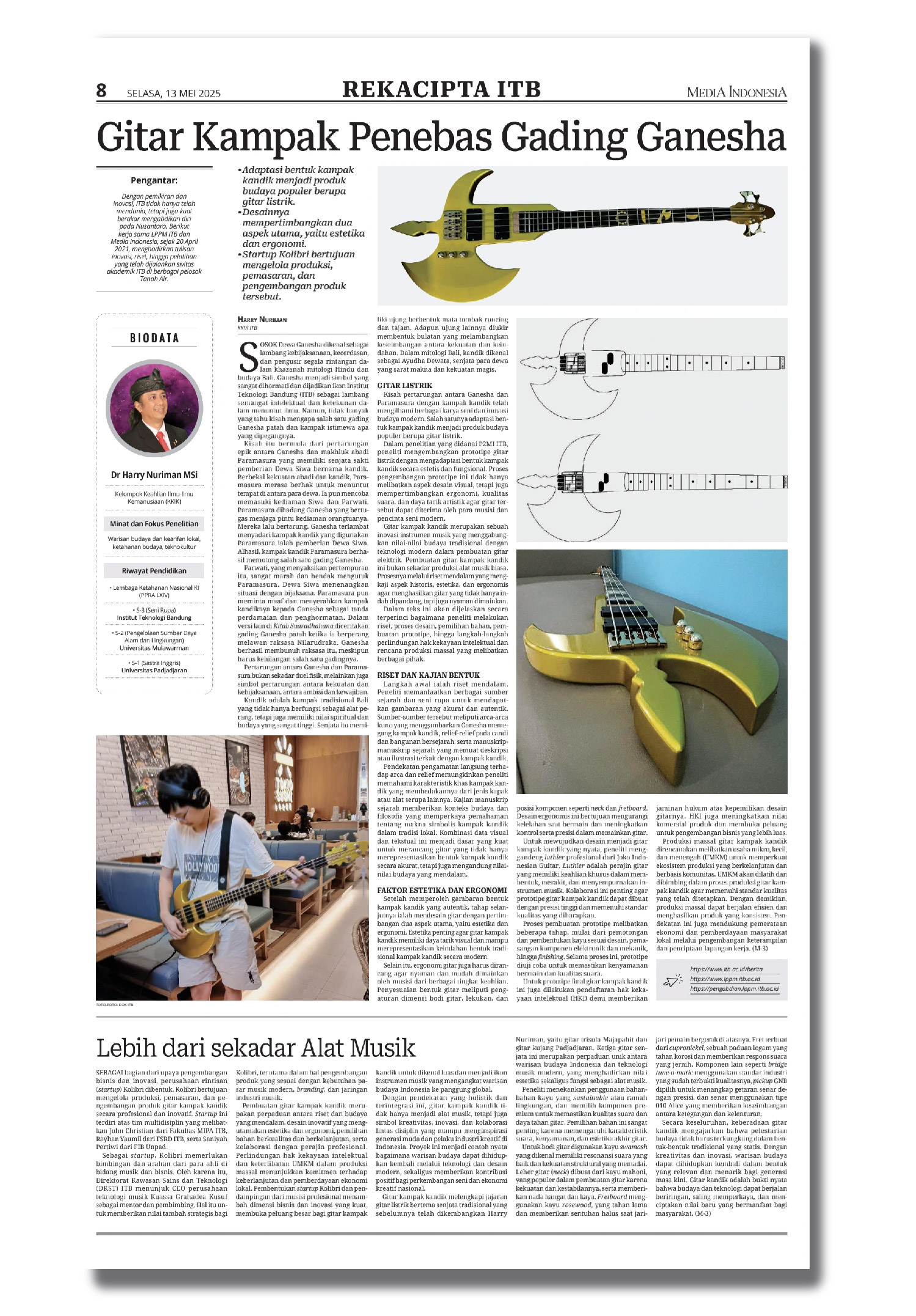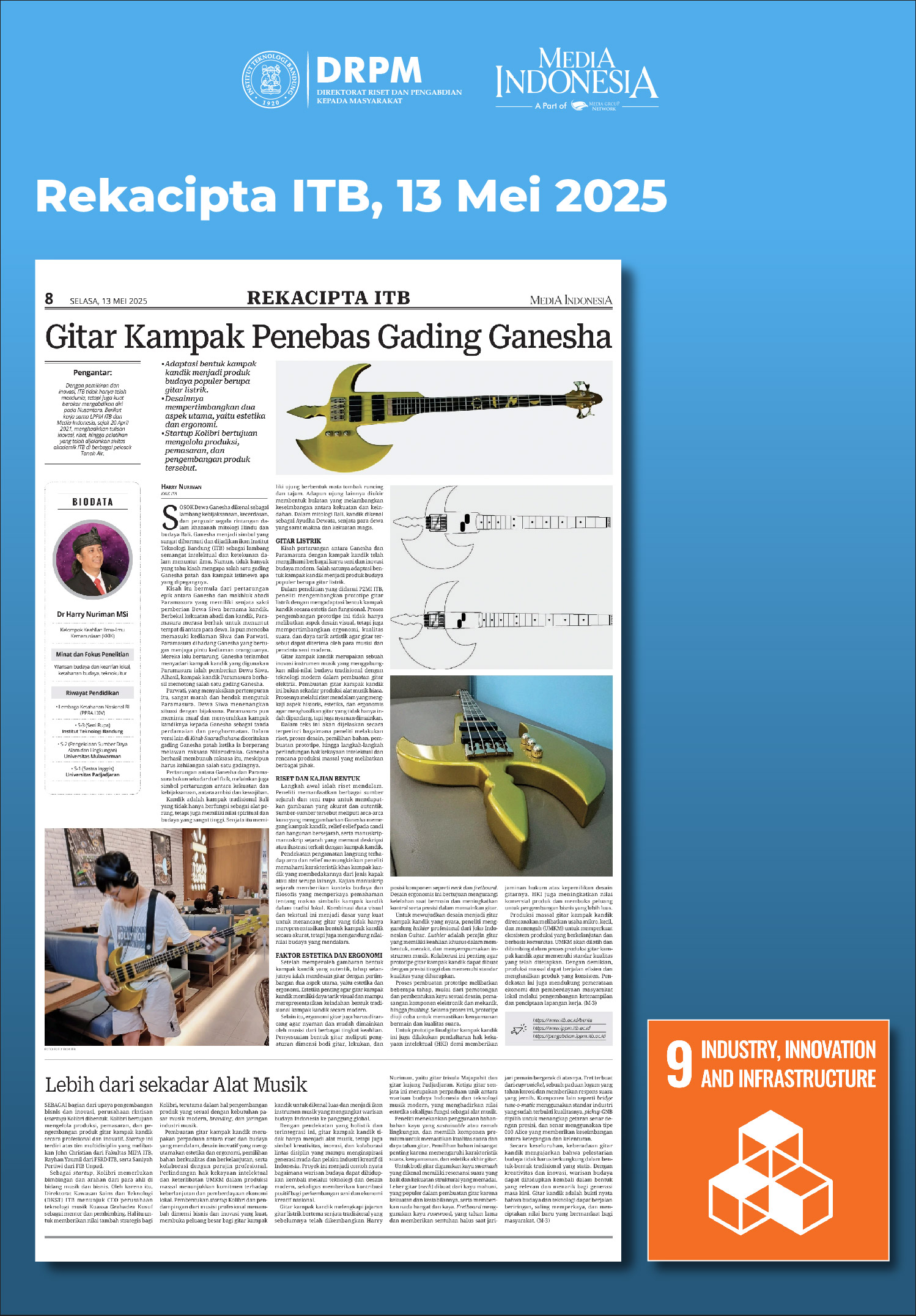

In the treasury of Hindu mythology and Balinese culture, the figure of Lord Ganesha is known as a symbol of wisdom, intelligence, and the remover of all obstacles. In Indonesia, Ganesha is a highly respected symbol and serves as the icon of the Bandung Institute of Technology (ITB), representing the spirit of intellect and perseverance in the pursuit of knowledge. However, not many people know the story of why one of Ganesha's tusks is broken and what special axe he holds.
To understand this, we must delve into an epic tale involving a battle between Ganesha and an immortal being named Paramasura. Paramasura is a figure in mythology with extraordinary power and a magical weapon called "kandik," a traditional Balinese axe that not only functions as a war tool but also holds immense spiritual and cultural value. This kandik was given directly by Lord Shiva, Ganesha's father, as a sign of trust and power. This weapon has a pointed and sharp spear-like tip, while the other end is beautifully carved into a rounded shape, symbolizing the balance between strength and beauty. In Balinese mythology, the kandik is known as Ayudha Dewata, the weapon of the gods, laden with meaning and magical power.
Paramasura felt that with his immortal power and the kandik given by Shiva, he had the right to claim a place among the gods. He then attempted to enter the dwelling of Shiva and Parvati, which was a sacred and peaceful place. However, Paramasura was confronted by Ganesha, who was guarding the entrance to his parents' residence. They then fought.
The battle between Ganesha and Paramasura was not merely a physical duel, but also a symbolic struggle between power and wisdom, between ambition and duty. In that fierce battle, Ganesha was late to realize that the kandik axe used by Paramasura was a gift from his own father, Lord Shiva. As a result, Paramasura's kandik axe managed to sever one of Ganesha's tusks.
Parvati, witnessing the battle, was furious and intended to curse Paramasura, but Lord Shiva wisely calmed the situation. Paramasura then apologized and surrendered his kandik axe to Ganesha as a sign of peace and respect. In another version recorded in the Suaradhahana scripture, it is narrated that Ganesha's tusk broke when he fought against the giant Nilarudraka, a creature that could only be defeated by a being who was neither human nor animal. Ganesha met this condition and successfully killed the giant, although he lost one of his tusks in the process.
The story of Ganesha's battle with Paramasura using the kandik axe as his weapon has inspired various modern artworks and cultural innovations, one of which is the adaptation of the kandik axe's shape into a popular cultural product in the form of an electric guitar. This innovation was pioneered by Dr. Harry Nuriman, a lecturer from the Humanities Expert Group (KKIK), who successfully combined traditional cultural heritage with modern musical technology.
Dr. Harry Nuriman's research was funded by P2MI ITB, which provided financial and resource support to develop an electric guitar prototype that aesthetically and functionally adapts the shape of the kandik axe. This prototype development process not only involved visual design aspects but also considered ergonomics, sound quality, and artistic appeal so that the guitar could be accepted by musicians and modern art lovers.
The kandik axe guitar is an innovative musical instrument that combines traditional cultural values with modern technology in the making of electric guitars. The process of making the kandik axe guitar is not merely the production of an ordinary musical instrument but involves in-depth research that examines historical, aesthetic, and ergonomic aspects to produce a guitar that is not only beautiful to look at but also comfortable to play. This text will explain in detail how the researchers conducted the research, the design process, material selection, prototype creation, up to the steps for intellectual property protection and mass production plans involving various parties.
Research and Form Study
The initial step in making the kandik axe guitar was to conduct in-depth research on the shape of the kandik axe held by Ganesha, which became the main inspiration for the guitar's design. Researchers utilized various historical and artistic sources to obtain an accurate and authentic representation. These sources included ancient statues depicting Ganesha holding the kandik axe, reliefs on temples and historical buildings, and historical manuscripts containing descriptions or illustrations related to the kandik axe.
Through direct observation of statues and reliefs, researchers could study the proportions, shape, and ornamental details of the kandik axe visually. This approach allowed researchers to understand the characteristic features of the kandik axe that differentiate it from other types of axes or similar tools. In addition, the study of historical manuscripts provided cultural and philosophical context that enriched the understanding of the symbolic meaning of the kandik axe in local traditions. This combination of visual and textual data formed a strong basis for designing a guitar that not only accurately represented the shape of the kandik axe but also contained deep cultural values.
Aesthetics and Ergonomics
After obtaining an authentic representation of the kandik axe's shape, the researchers proceeded to the guitar design stage, considering two main aspects: aesthetics and ergonomics. Aesthetics became an important consideration so that the kandik axe guitar would have strong visual appeal and be able to represent the beauty of the traditional kandik axe form in a modern way. However, aesthetics alone are not enough; the guitar also had to be designed to be comfortable and easy to play by musicians of various skill levels.
For this, the researchers made adjustments to the shape of the kandik axe guitar to maintain ergonomics. This included adjusting the dimensions of the guitar body, curves, and the position of components such as the neck and fretboard to suit the player's posture and hand movements. This ergonomic design aims to reduce fatigue during playing and improve control and precision in playing the guitar. Thus, the kandik axe guitar became an instrument that is not only visually beautiful but also functional and comfortable to use in various performance situations.
Collaboration with Professional Luthiers
To realize the design into a tangible kandik axe guitar, the researchers collaborated with professional luthiers from Joko Indonesian Guitar. A luthier is a guitar craftsman who has special expertise in shaping, assembling, and perfecting musical instruments. This collaboration was important so that the kandik axe guitar prototype could be made with high precision and meet the expected quality standards.
The prototype manufacturing process involved several stages, from cutting and shaping wood according to the design, installing electronic and mechanical components, to finishing that paid attention to aesthetic details. During this process, the prototype was tested to ensure playing comfort and sound quality. If deficiencies were found, design revisions and improvements were made until the prototype reached its final stage, ready for further production.
Intellectual Property Rights Protection
After the kandik axe guitar prototype reached its final stage, the next important step was to protect this design and innovation through intellectual property rights (IPR) registration. Registration was carried out at the Ministry of Justice of the Republic of Indonesia by the Institute of Innovation and Entrepreneurship Management (LPIK) /DKST Institut Teknologi Bandung.
This IPR protection provides legal assurance of ownership of the kandik axe guitar design, preventing imitation or unauthorized use by other parties. In addition, IPR also increases the commercial value of the product and opens up opportunities for broader business development. The registration process includes submitting design documents, proof of innovation, and administrative review by relevant agencies until the IPR certificate is issued.
Mass Production and MSME Involvement
To reach a wider market and support local economic development, mass production of the kandik axe guitar is planned to involve Micro, Small, and Medium Enterprises (MSMEs). The involvement of MSMEs not only provides business opportunities for small business actors but also strengthens a sustainable and community-based production ecosystem.
MSMEs will be trained and guided in the production process of the kandik axe guitar to meet established quality standards. Thus, mass production can run efficiently and produce consistent products. This approach also supports economic equity and local community empowerment through skill development and job creation.
Formation of Kolibri Startup and Professional Mentoring
As part of business and innovation development efforts, a startup named Kolibri has been formed. This startup consists of a multidisciplinary team involving John Christian from the Faculty of Mathematics and Natural Sciences (MIPA) ITB, Rayhan Yaumil from the Faculty of Art and Design (FSRD) ITB, and Saniyah Pertiwi from the Faculty of Cultural Sciences (FIB) Padjadjaran University (Unpad).
Kolibri aims to manage the production, marketing, and product development of the kandik axe guitar professionally and innovatively. As a developing startup, Kolibri needs guidance and direction from experts in the fields of music and business. Therefore, LPIK/DKST ITB appointed Grahadea Kusuf as a mentor and guide. Grahadea Kusuf is a renowned musician and record producer from Indonesia, known as a synth player in the electropop group HMGNC (formerly Homogenic) from Bandung, and CEO of the music technology company Kuassa.
Mentoring from Grahadea Kusuf provides strategic added value for Kolibri, especially in terms of product development that aligns with the needs of the modern music market, branding, and the music industry network. This is expected to accelerate the startup's growth and expand the reach of the kandik axe guitar in both national and international markets.
The process of making the kandik axe guitar is a blend of in-depth cultural research, innovative design that prioritizes aesthetics and ergonomics, the selection of quality and sustainable materials, and collaboration with professional craftsmen. Intellectual property rights protection and the involvement of MSMEs in mass production demonstrate a commitment to sustainability and local economic empowerment. The formation of the Kolibri startup and mentoring from professional musicians add a strong business and innovation dimension, opening up great opportunities for the kandik axe guitar to be widely known and become an icon of musical instruments that bring Indonesia's cultural heritage to the global stage.
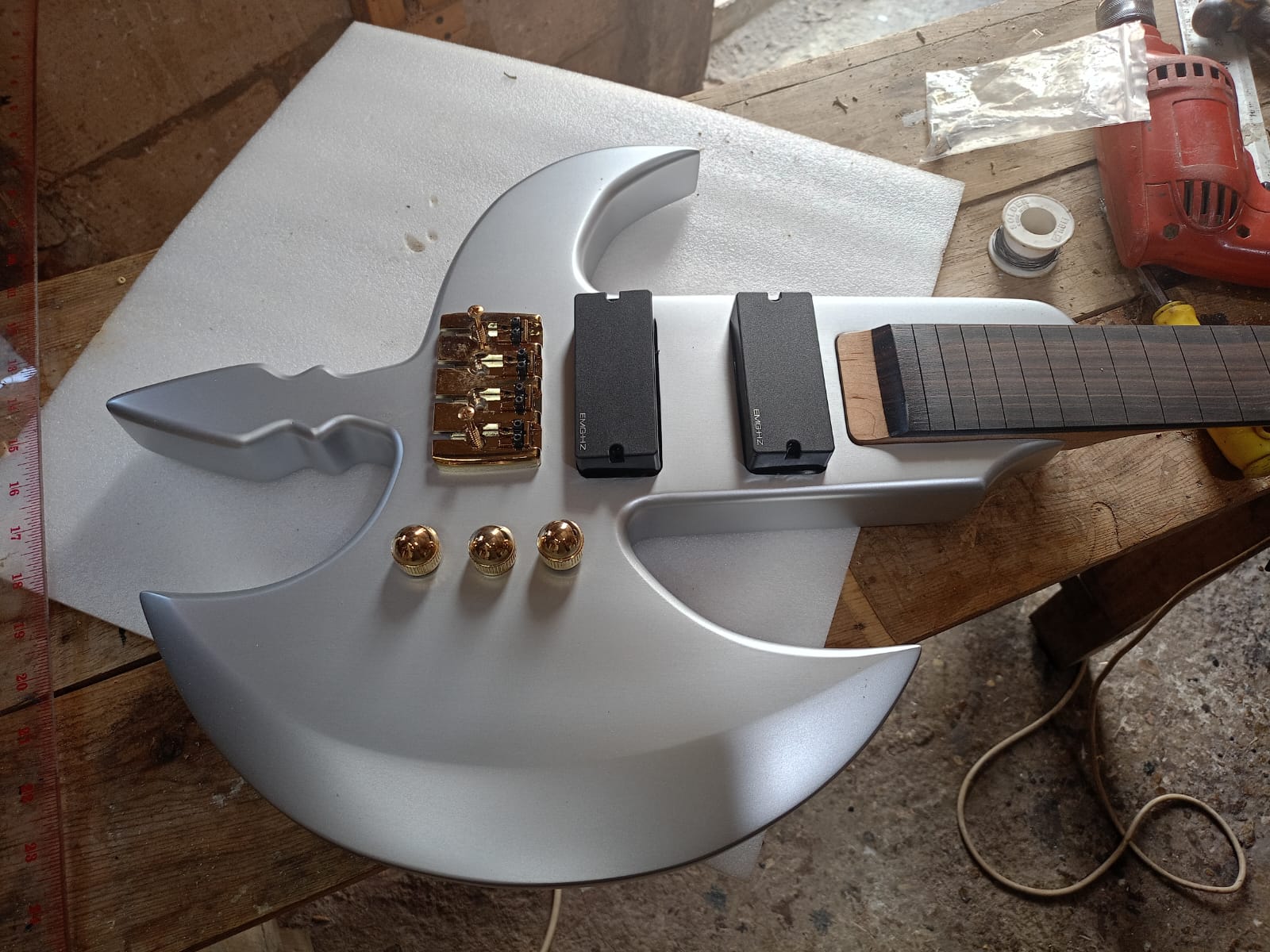
Through this holistic and integrated approach, the kandik axe guitar does not merely become a musical instrument, but also a symbol of creativity, innovation, and cross-disciplinary collaboration capable of inspiring young generations and creative industry players in Indonesia. This project serves as a concrete example of how cultural heritage can be revitalized through modern technology and design, while simultaneously making a positive contribution to the development of national art and the creative economy.
The kandik guitar joins the ranks of electric guitars adapting the forms of traditional Indonesian weapons that have been previously developed by Dr. Harry Nuriman. Previously, Harry had designed the Majapahit trisula guitar, as well as the Padjadjaran kujang guitar. These three guitars are now unique collections that blend art, culture, and technology, and serve as tangible proof of how cultural heritage can be revived in a form relevant to the times.
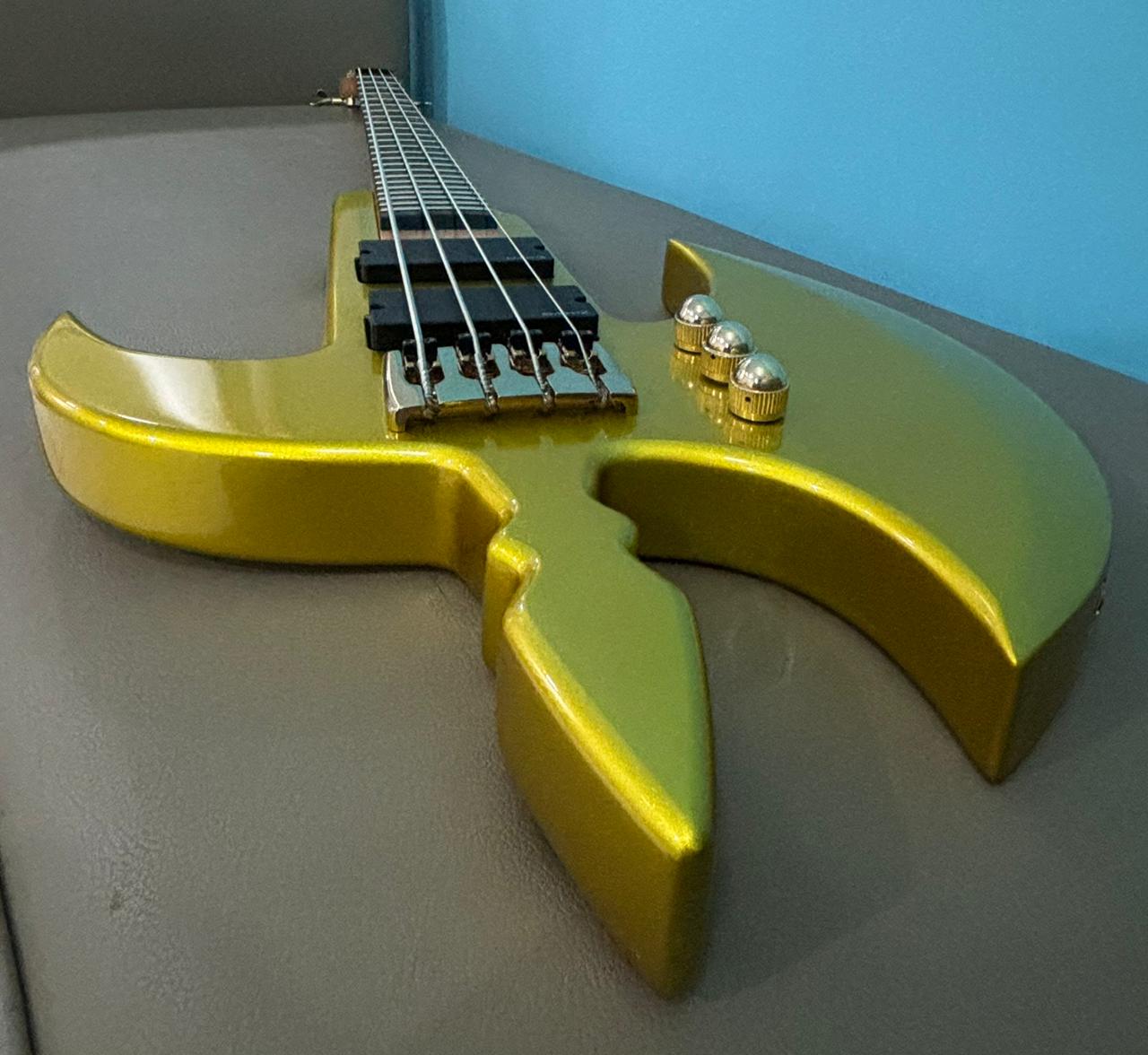
Currently, these three electric guitars shaped like traditional weapons are on display at Lippo Mall, Kuta, Bali. This exhibition not only showcases the beauty and unique design of the guitars but also educates visitors about the history and cultural significance behind each adapted weapon.
The adaptation of traditional weapons into popular cultural products like electric guitars offers significant benefits for cultural preservation, especially for younger generations. In an era of accelerating globalization and digitalization, many traditional cultural values are at risk of being forgotten. By integrating cultural elements into products favored by young people, such as modern musical instruments, these values can be revived and naturally embraced in daily life. The kandik guitar and other traditional weapon guitars serve as effective educational mediums, connecting younger generations with their cultural roots through the experience of playing music and appreciating art.
Furthermore, this innovation also opens new opportunities in the creative industry and cultural economy. Products like the kandik guitar not only possess high artistic value but also have vast market potential, both domestically and internationally. This fosters the growth of an innovative ecosystem that synergistically combines research, education, entrepreneurship, and cultural preservation. Thus, works like the kandik guitar become not only symbols of cultural pride but also sources of livelihood and sustainable development for the creative economy.
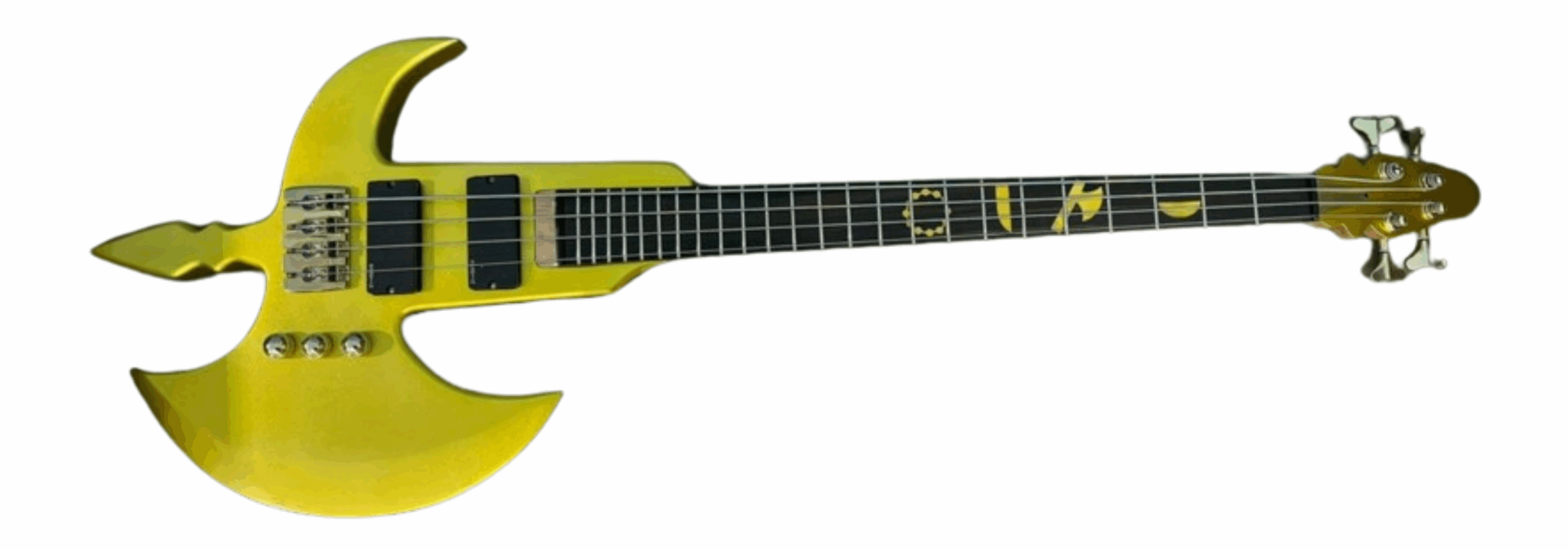
Furthermore, the success of Dr. Harry Nuriman and Kolibri Instruments in developing and marketing the kandik guitar demonstrates the importance of collaboration between academics, research institutions, government, and creative industry players. The support from P2MI and LPIK/DKST serves as a concrete example of how synergy among various parties can lead to meaningful and widespread innovation. This approach can serve as a model for the development of other cultural products that elevate Indonesia's rich traditions onto the global stage.
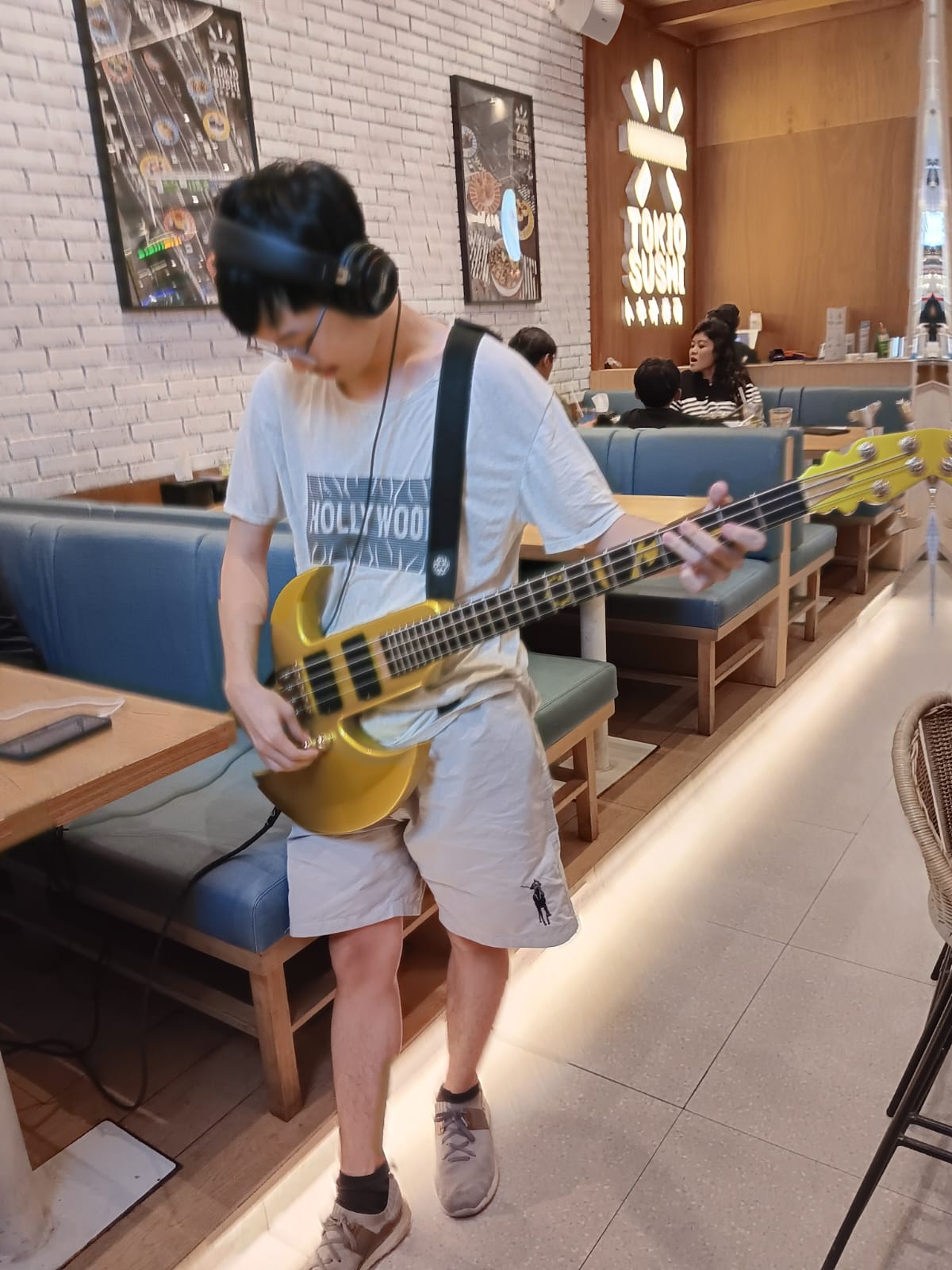
Overall, the inspiring story behind the kandik guitar teaches us that cultural preservation does not have to be confined to static traditional forms. With creativity and innovation, cultural heritage can be revitalized in a way that is relevant and appealing to the current generation. The kandik guitar is tangible proof that culture and technology can go hand-in-hand, mutually enriching each other, and creating new value that benefits society at large.
